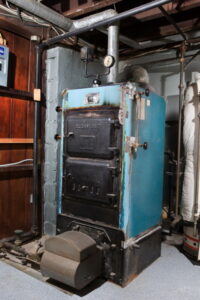
We encourage our customers to think about their home heating systems as the winter comes to a close. Although the climate doesn’t immediately turn warmer as soon as the calendar switches to spring—as much as we’d like it to—this is the season to assess how well your heater has operated over the year and if it’s time to get a new one.
On that subject, we’d like to talk about age and heating systems to help you understand why an older heater, even one that is still “getting the job done,” is a good candidate for a replacement.
How Old Is Too Old?
This depends on the type of heater. Natural gas furnaces, which are the most common type in homes, can last from 15 to 20 years as long as they receive professional annual maintenance and any repair needs are taken care of in a timely manner. Electric furnaces can often last for more than 20 years. Heat pumps have shorter service lives, averaging from 10 to 15 years.
We recommend replacing a heater once it reaches the upper limits of its life expectancy, even if its heating capacity has not declined. A heater that has routine maintenance will retain 95% of its original efficiency rating for all but the last two years of its service life, after which it will begin to decline. So if you have a gas furnace that’s 20 years old, it’s probably already starting to lose efficiency, which costs you in higher energy bills.
Outdated Technology
It’s not just the wear and tear from age that affects the energy efficiency of a heating system. It’s also that older heating systems are less efficient to begin with. The requirements for energy efficiency from the US Department of Energy have changed over the decades to reflect the improvements in heating technology.
For example, for several decades the standard “mid-efficiency” gas furnace had an AFUE rating of 70%. This means the furnace would convert 70% of its natural gas fuel supply into heat for the house, and the remaining 30% would become exhaust gases sent to the outside. Today, for a gas furnace to be approved for the ENERGY STAR label, it needs an AFUE of at least 95% in the Northern US. That is a huge change in efficiency: rather than wasting 30% of its energy supply, a furnace now only wastes 5%. This not only means an immense drop in the cost to run the furnace, it hugely benefits the environment with a reduction in reliance on fossil fuels.
Even if your current furnace isn’t old enough to be one of those gas-gobbling 70% AFUE models, it may have an AFUE of 80% or 85% (and already be declining from age). The change to the basic ENERGY STAR model is, therefore, an efficiency increase of 10 to 15% and possibly more. There are also special high-efficiency condensing furnaces that can have an AFUE of 98% or more.
To find out more about how to have the best energy-efficiency heating in Ceres, CA by replacing your old furnace, call our team.
Greenhart is here to help you “Live Green, Save Green!” Call us to find out more about installing high-efficiency heating and cooling equipment for your home.






